Christmas time in Europe is magical for a number of reasons. The festive lights, the joyous atmosphere and, of course, the sound of carolers wandering through the markets! However, one of Expat Explore’s favourite things about Christmas time is that Europe’s best bakers and pastry chefs bring out their most delicious traditional Christmas treats.
Take a look at our list of the top ten European Christmas treats that need to be on your culinary bucket list:
Christstollen, Germany
Christstollen is a cake-like fruit bread prepared from yeast, water and flour. It is then flavoured with chopped, candied or dried fruit and nuts and spices, like cardamom and cinnamon. Certain variations also feature rum or marzipan. What sets it apart from regular fruit bread, is that it is slathered in melted butter and rolled in sugar warm from the oven!
Christstollen had humble beginnings as a medieval fasting food that was made only of flour, yeast, oil and water. It was served during the days of preparation for the celebration of the Nativity of Christ. Butter and sugar were banned during the fast. However, the restriction on butter was finally lifted in 1491. You’ll find Christstollen at most Christmas markets in Germany. If you want to go really authentic, you should buy it from the Striezelmarkt in Dresden. The market sells ‘official’ Christstollen that has been prepared by 150 approved Dresden bakers! These cakes also carry the seal depicting King Augustus II the Strong.
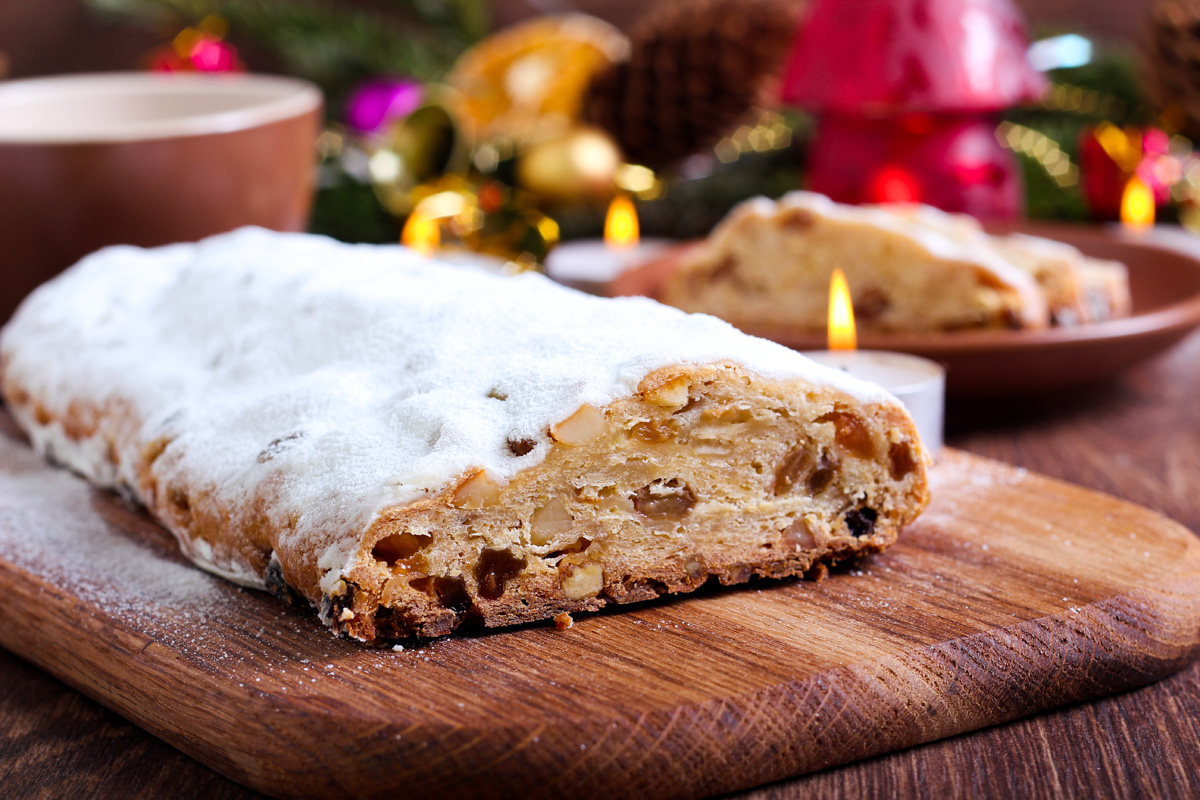
Panettone, Italy
Panettone is popular the world over. This sweet bread loaf originally hails from Milan, Italy where it is baked and enjoyed over Christmas and New Year. In fact, this cupola-shaped festive treat is known as one of the symbols of Milan! It is normally served in vertically-cut slices alongside sweet beverages like tea, amaretto liqueur or Moscato wine.
There are a few legends regarding the origins of panettone and its name. One describes a scullion (named Toni) saving the day when the chef burned the cake. Toni offered his prized yeast and combined it with flour, eggs, sugar, candied fruit and raisins. This resulted in a delicious cake that the chef called ‘Pan de Toni’ (Toni’s bread).
Find Panettone at any good Italian supermarket. But, it’s mostly enjoyed at home with family over the festive season. Or, you could enjoy it with a caffe latte or cappuccino in the morning.
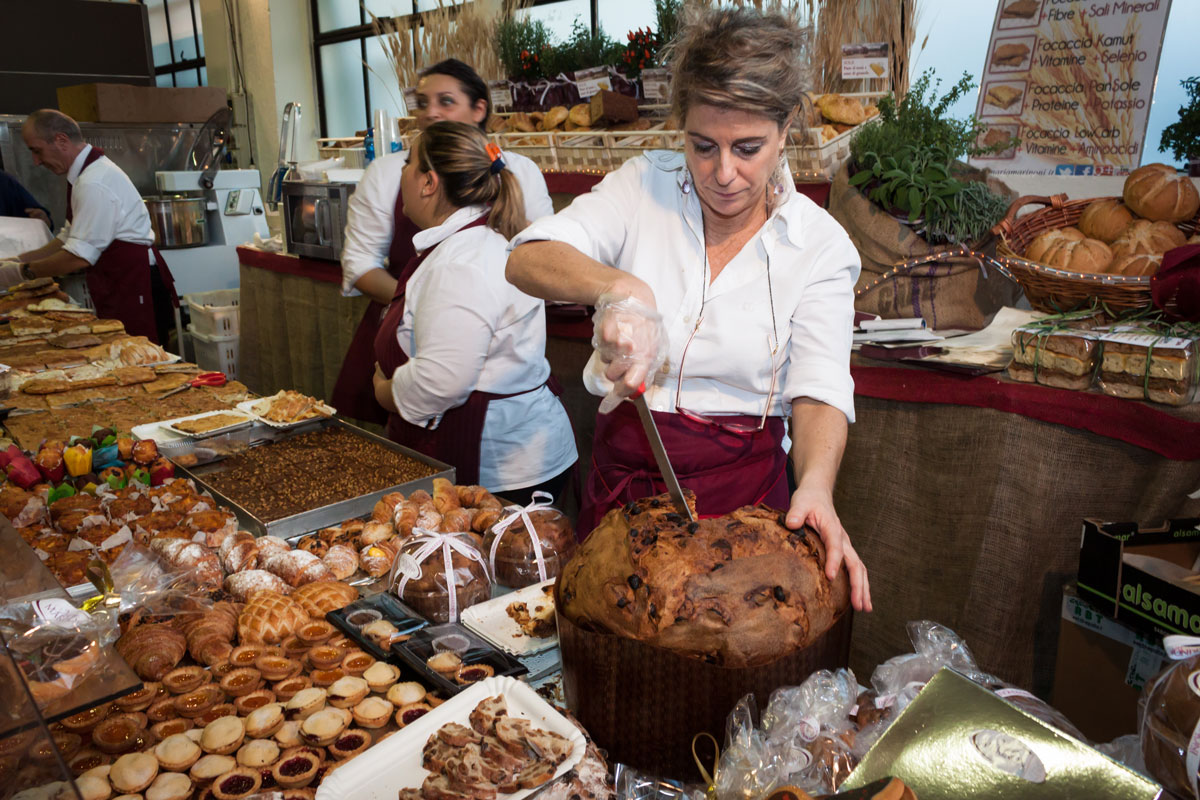
Christmas Mince Pies, Great Britain
Despite its current name, British Christmas Mince Pies are actually a sweet, fruit-based pie. These sweet Christmas treats are served over the winter holiday period in English-speaking countries. The slightly confusing name can be traced back to the 13th century. European crusaders returned home with the original recipe for Middle Eastern pies that contained meat, fruit and spices.
Mince pies were originally baked in an oval shape. The oval was representative of the manger in which Jesus slept on the eve of his birth. You can find Christmas Mince Pies pretty much everywhere in Great Britain over the festive season. However, Harrods is particularly renowned for their version.
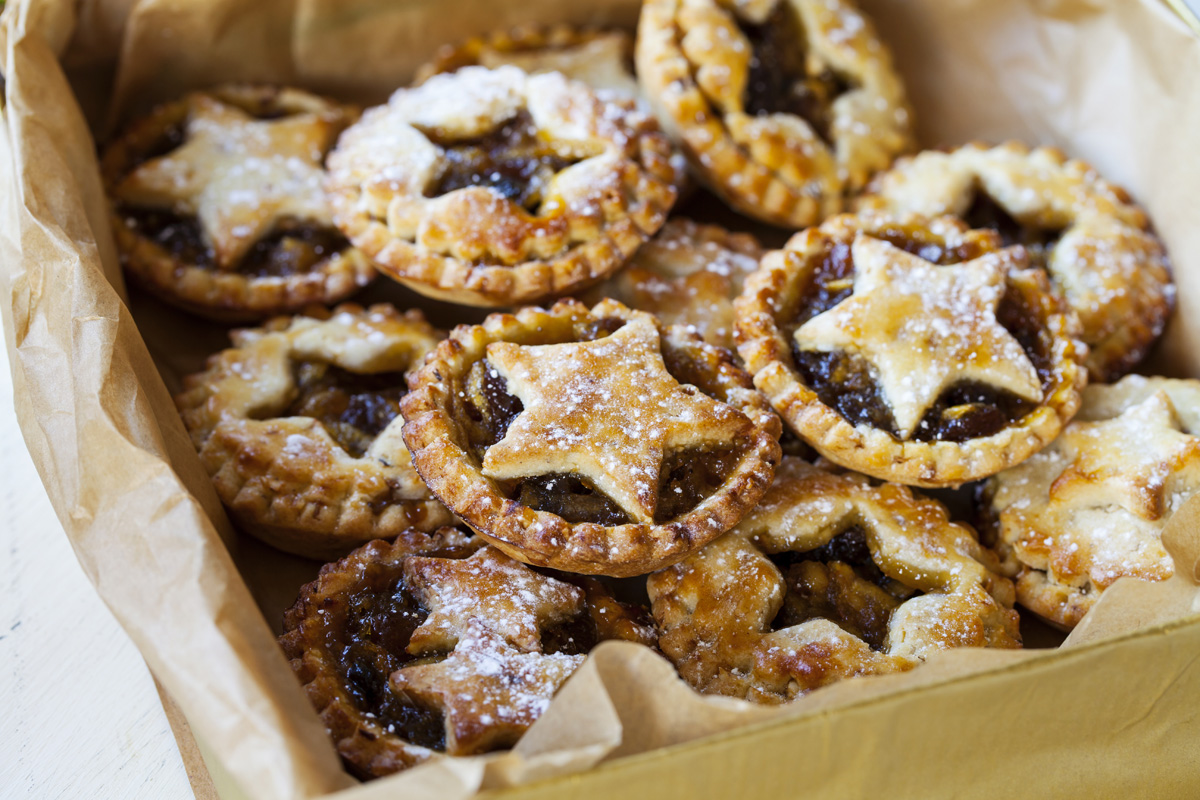
Bolo Rei, Portuguese Kings Cake, Portugal
Bolo Rei, which translates to ‘king’s cake’, is a bread-like cake in the shape of a crown or wreath. The cake contains raisins, pine nuts, candied fruits, as well as citrus zest. It is normally decorated with strips of candied fruit and nuts. The cake is traditionally enjoyed on the 25th of December (Nativity) and the 6th of January (Epiphany).
It is a Portuguese custom to insert a dried fava bean and a small coin or gift into the dough before baking. Whoever receives the slice of bread containing the bean, is the person designated to make the bread the following year. And, whoever finds the coin is said to be in store for great riches! You can find Bolo Rei at most bakeries and pastry stores throughout Portugal from the end of November through to the Epiphany, on the 6th of January.
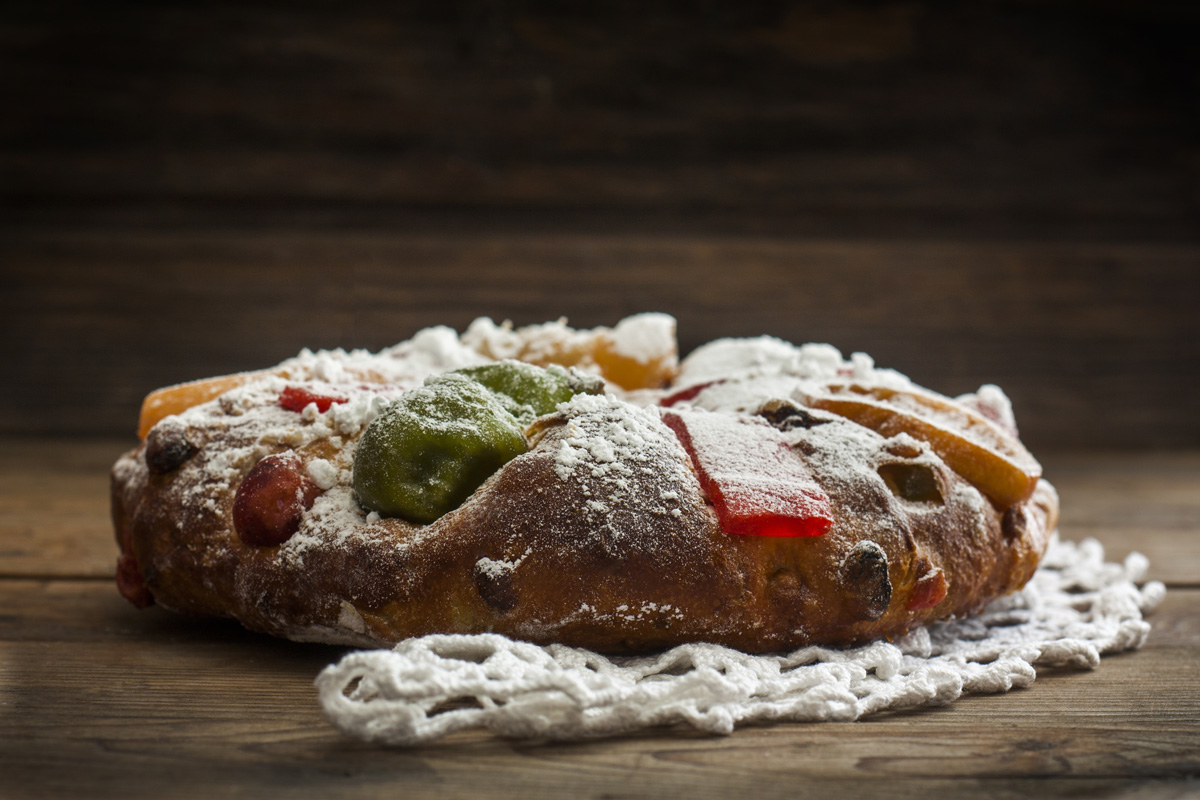
Kourabiedes, Greece
Kourabiedes (or clove cookies) are Greek Christmas shortbread cookies. These treats combine fresh butter, roasted almonds and lashings of icing sugar for a crunchy bite and delectably fluffy exterior.
Kourabiedes were introduced to the Greeks during Ottoman rule. During Ottoman rule, kourabiedes were cut into crescent shapes as an act of deference to their colonisers. This practice soon lost favour following Greek independence in the early 19th century. Kourabiedes will be sold at any bakery or pastry shop in Greece or wherever there is a Greek community.
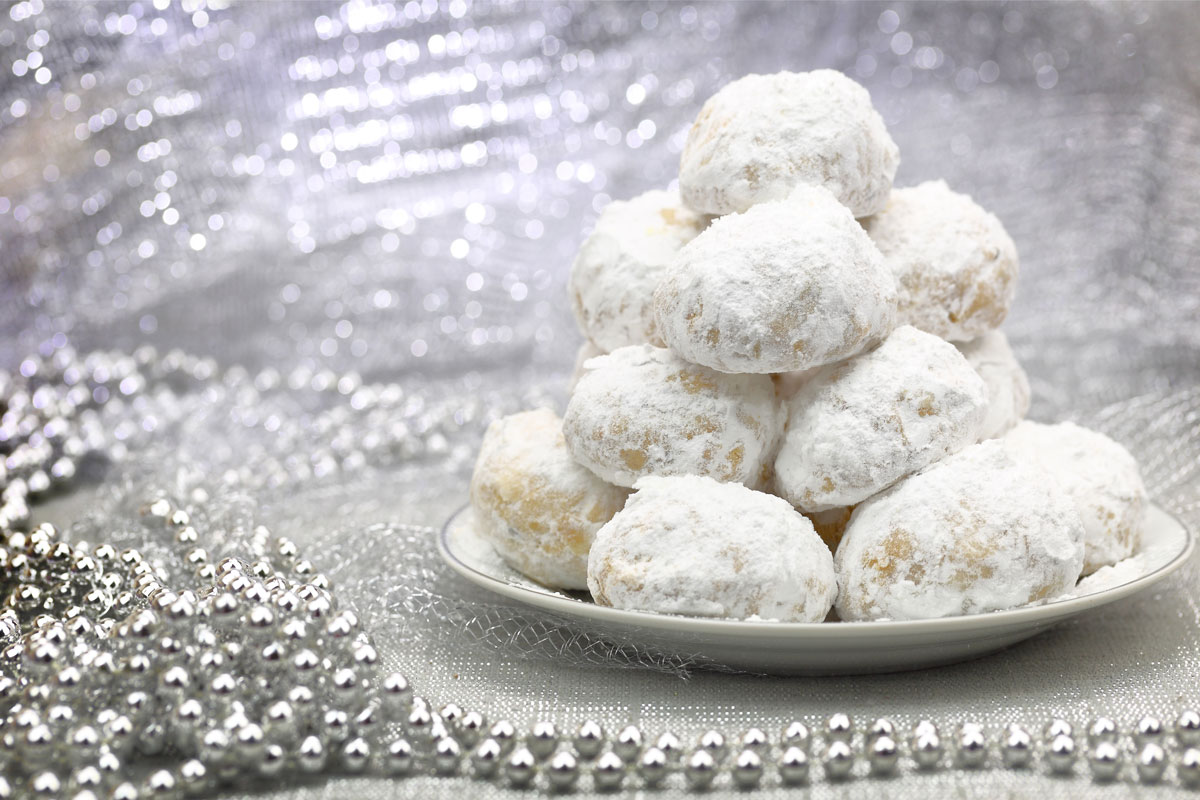
Related: These are the foods you have to try in Greece!
Beigli, Hungary
Beigli is a walnut or poppy seed roll traditionally eaten in Hungary at Christmas time and over Easter. These days a lot of bakers are experimenting with different fillings such as chestnut puree and Nutella.
Beigli originates from Germany. Although, in Hungary, it became a custom to bake Beigli for Christmas in the 19th century during the Austro-Hungarian Monarchy. Find Beigli at pastry stores and Christmas markets throughout Budapest and Hungary over the festive season.
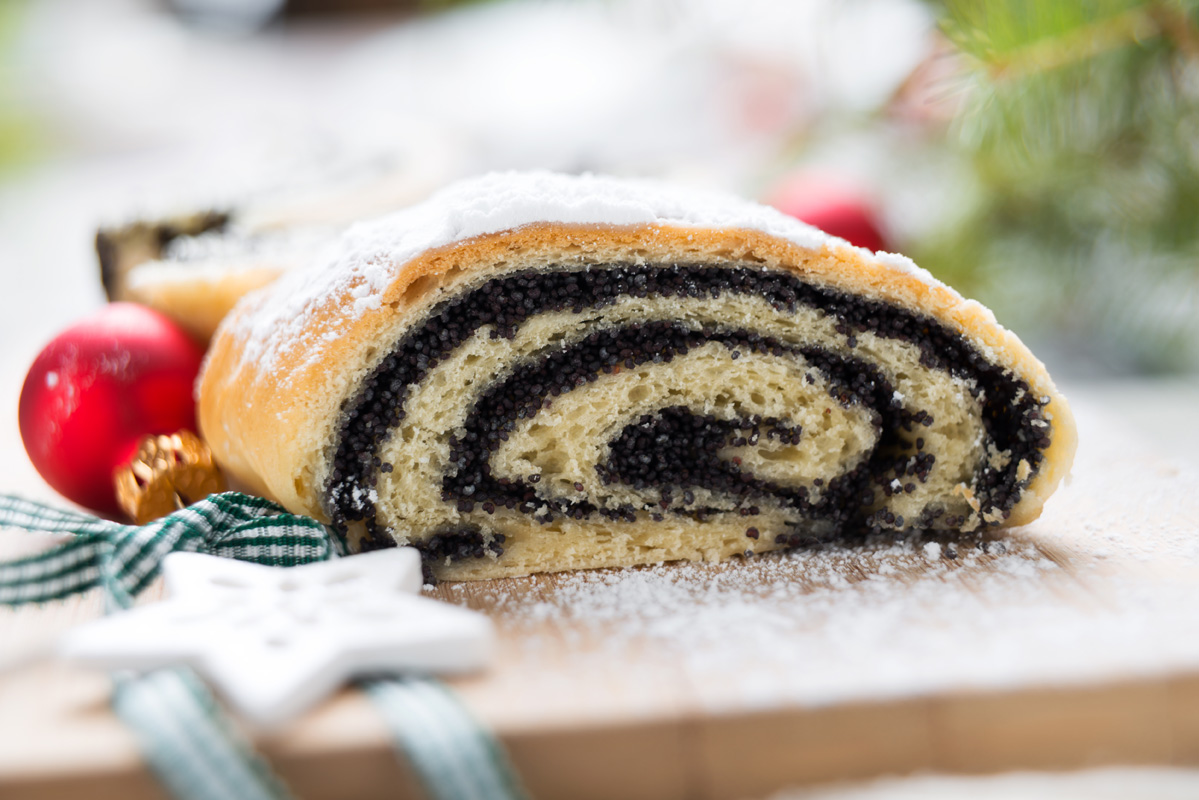
Related: Discover more delicious Hungarian dishes.
Buche de Noel, France
Bûche de Noël is the French term for a yule log. In its most basic form, it’s a flourless chocolate cake that is rolled up with chocolate buttercream and dusted with confectioner’s sugar. More elaborate variations include forest-inspired decorations like meringue mushrooms, cobwebs spun from sugar, and holly sprigs made from marzipan.
The history of the yule log goes back all the way to the Iron Age. Celtic Brits gathered for the winter solstice, to celebrate the longer days and cleanse the air of the previous year’s misgivings. The cleansing took place by burning logs with holly or ivy. Somewhere during the 1600s, the physical log was replaced with an edible version. In the 1800s, the yule log was popularised by Parisian bakers. Grab a Bûche de Noël at any good Boulangerie throughout France.
Travel tip: Order your Bûche de Noël ahead of time; these delicious yule logs are snapped up very quickly!
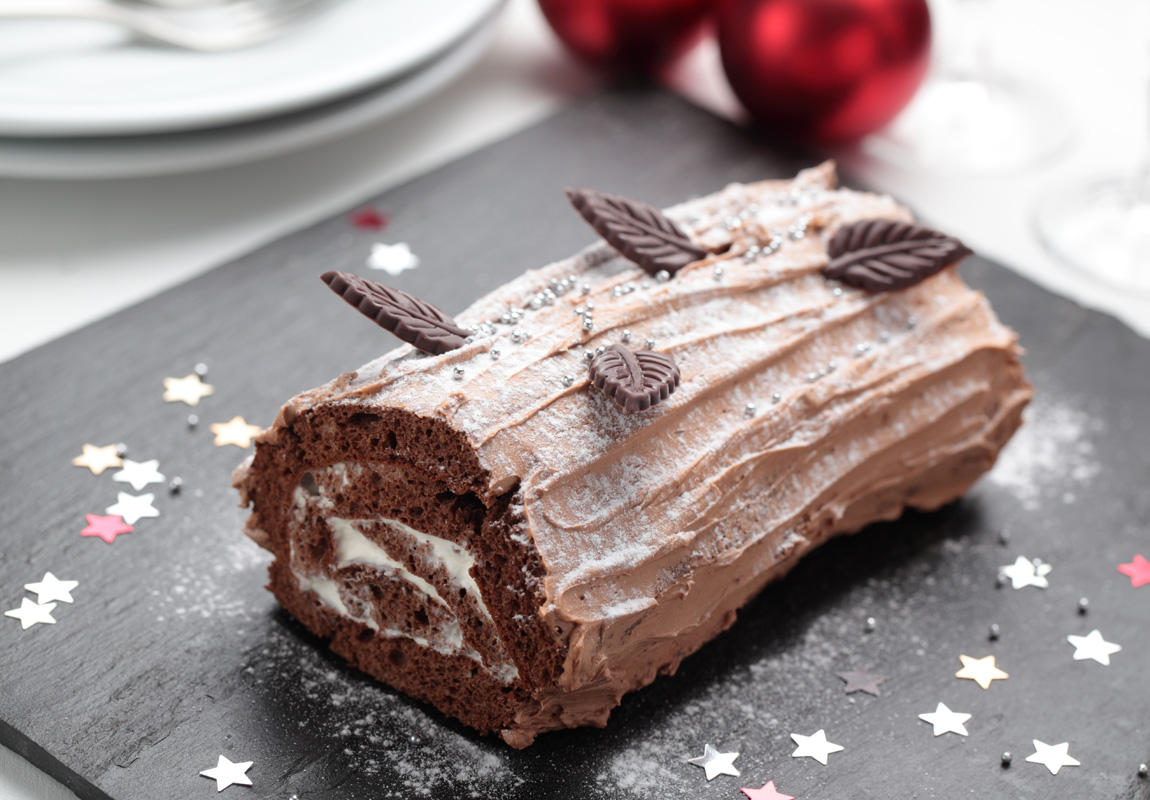
Banketstaaf, Netherlands
Banketstaaf is a puff pastry roll with a tasty almond-paste centre, baked till golden brown. It is normally sold in rolled ‘logs’. The Banketstaaf is then cut into short lengths, like a baguette and served hot or cold. Some bakers will bake the cut lengths until it resembles a cookie. Banketstaaf can be found at most bakeries in the Netherlands over the festive season. But it’s also really simple to make! Make it at home as a fun festive activity to try with kids.
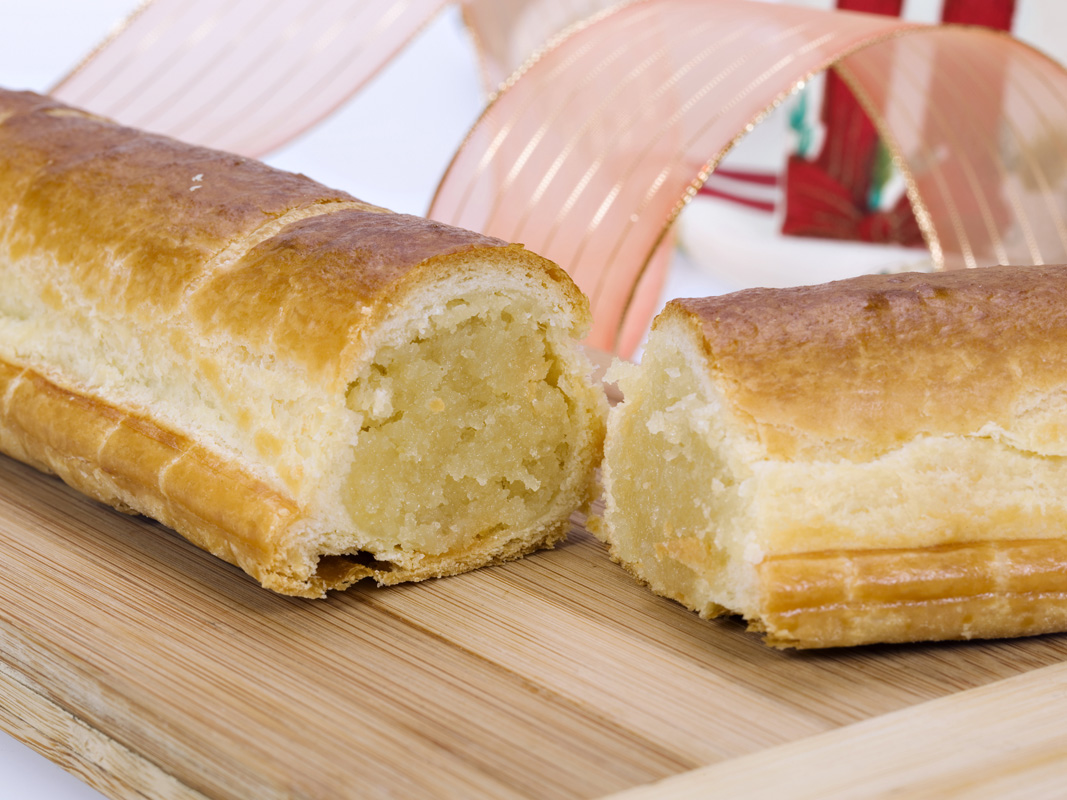
Lussekatter (lussebullar), Sweden
Lussekatter are S-shaped saffron buns decorated with raisins and said to represent the shape of a cat. These buns are made in honour of St Lucia.
Lussekatter are eaten on December 13th to celebrate Lucia (the patron Saint of Light). December 13th was originally thought to be the shortest day of the year and is still the date chosen in Sweden to celebrate the return of lighter days.
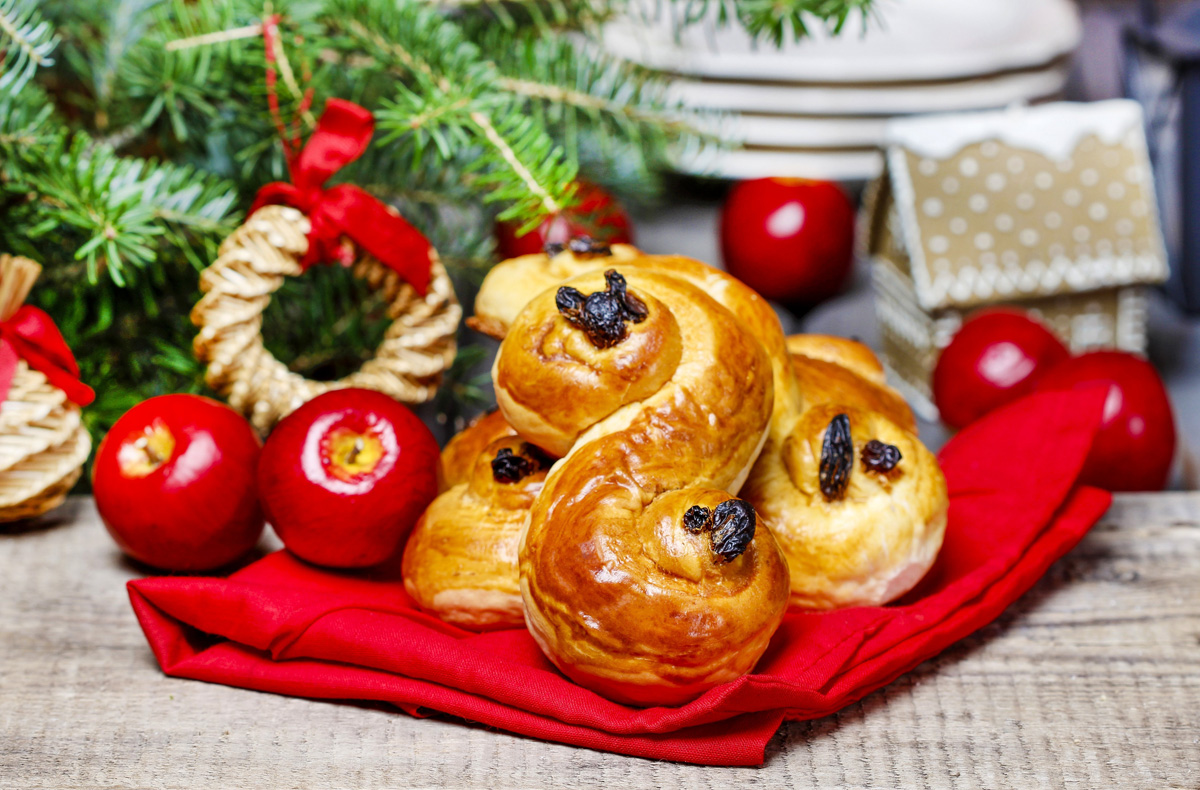
Vánoční Cukroví, Czech Republic
Vánoční Cukroví are traditional, iced shortbread Czech Christmas cookies. They are baked and exchanged among friends, family and neighbours throughout the festive season. Delight in one (or two or more) Vánoční Cukroví while exploring Christmas markets in the Czech Republic.
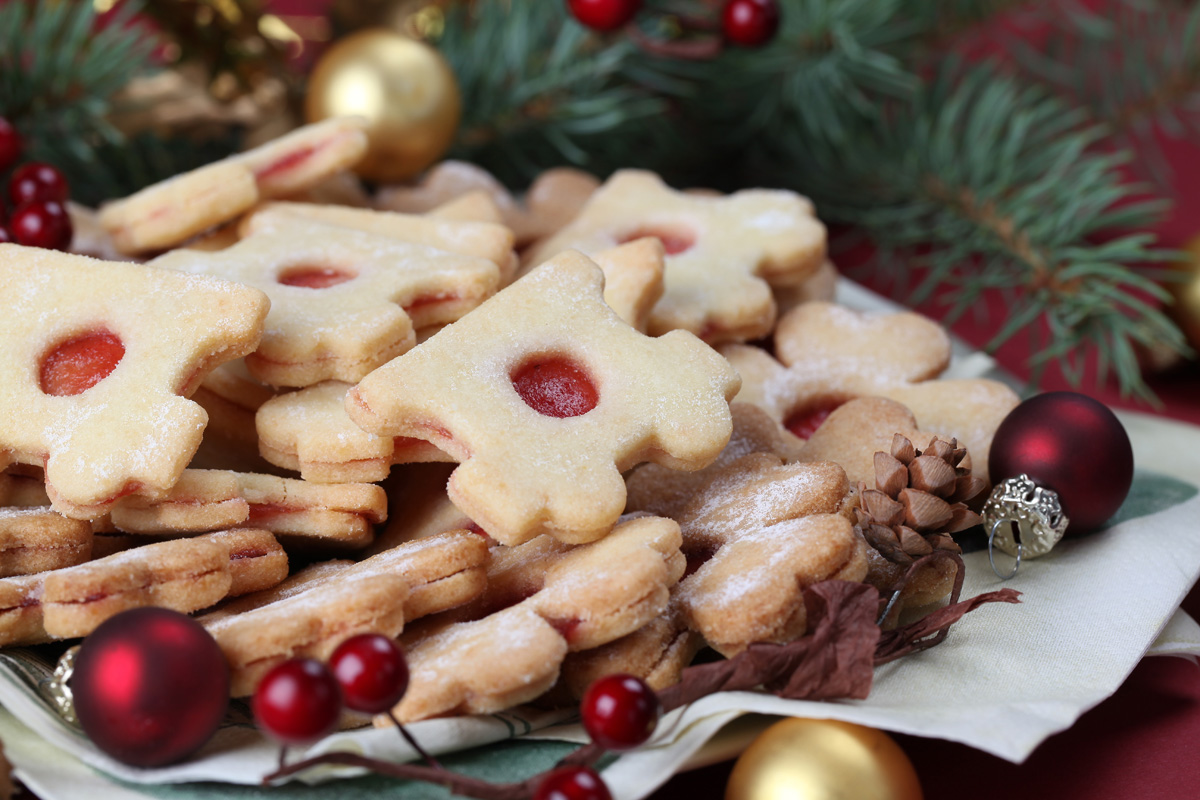 Embrace Czech festive spirit with a vanocni or two!
Embrace Czech festive spirit with a vanocni or two!
Related: Don’t miss out on Europe’s best Christmas markets!
Europe is home to tons of delicious things to eat and even more so at Christmas time. If you plan to travel this winter season, check out our European festive tours and look forward to an unforgettable Christmas adventure!
